Phanteks Glacier One 360MP Review
Introduction
Phanteks's Glacier One MP series promises to deliver good cooling performance while looking clean and modern. But while trying to look simple, Phanteks included a unique twist by detaching the Waterblock/Pump cover from the Pump. Let's take a closer look at the Glacier One 360MP and see if it can meet our performance expectations and what's up with that cover!
Positive
- Performance
- Unique removable ARGB Cover
- Quality
- Tube "holders"
- Everything can run off 1 PWM header
Neutral
- Price
Negative
- Fans are loud
- Fans are overpowered
What's in the Box?

Even though the Phakteks Glacier One 360MP comes in the usual AIO carton box featuring the AIO, some specs, and some selling points, the unboxing experience ended up quite unexpected. Once we opened the box, we were greeted by a surprisingly thick sheet of a carton containing a Thank-You note for choosing to use Phanteks components.
This may seem like a little marketing gimmick and does not tell us anything about the product itself, but we can't ignore the fact that with high-quality packaging and a little thank you note, you start off your journey with a positive attitude.
Inside the box we found exactly what we expected:
- Glacier One 360MP
- 3x 120 MP Fans
- ARGB Cover
- Installation Hardware AMD
- Installation Hardware Intel
- Thermal paste
- Cable Holders
- Cable Splitters & Extensions
On the side of the box, Phanteks included an extensive spec sheet, which we summarized down below:
| Name | Phanteks Glacier One 360MP |
| Dimensions (Radiator) | 394x120x27 (HxWxD) |
| Fan Airflow | 60.51 CFM |
| Fan Noise | 34.2 dB |
| Fan Air Pressure | 3.41 mm-H2O |
| Fan Speed | 2200RPM |
| Fan Connection | PWM |
|
Fan RGB |
No |
| Pump Connection | PWM |
| Pump/Water block RGB | ARGB on the removable cover (ARGB) |
Compatibility
Phanteks's Glacier Once series is compatible with every relevant platform. But they also made sure to maintain compatibility with quite an amount of older platforms. Down below we attached an extensive list of every Socker which is compatible with the AIO:
| AMD | Intel |
| AM4 | LGA 115x |
| TR4 | LGA 1200 |
| sTRX4 | LGA 1366 |
| LGA 2011 | |
| LGA 2011-3 | |
| LGA 2066 |
Individual Components
Waterblock / Pump

Inside the Glacier One's Waterblock/Pump combo-unit, Phanteks used Asateks latest 7th gen pump which spins at up to 2800RPM. Underneath this sits a big copper block with pre-applied thermal paste.

But this part of the AIO is quite unique on the market. Instead of just slapping a chunk of plastic covered in RGB onto its pump, Phanteks tried a completely different approach.
The water block and pump, which are also surprisingly thin, are completely detached from the cover that is supposed to sit on top.
The individually packaged cover contains a couple of RGBs at the top and bottom as well as a mini infinity mirror in the center. All of this is controllable over a 3-Pin ARGB connection. On the backside of this cover, Phanteks mounted a couple of magnets which let the Cover keep its position on the water block. Just clip it on, and it will stay there.

An approach like this does not come with any performance increase, though we have to note that it allows to fully cover up the mounting screws and make the installation easier, ignoring the fact that it looks awesome.
In our opinion, this is a great way to go. Not only because of the before-mentioned facts but also because it allows the creation of individual designs from which the customer could choose, making the AIO extremely versatile and optically compatible to basically any build. That being said, we were quite sad to discover that there are no alternative designs available, nor is there any communication from Phanteks about such plans.
We truly hope that Phanteks will release alternative designs later on.
Radiator

On the radiator side, Phanteks decided to go with the usual thickness of 27mm. The absolute standard size for AIOs.
Fan

The 120 MP Fans which are included are a bit of a mystery. These are not the usual 120 MP case fans that were available for a long time, but a beefed-up version. Spinning at 2200RPM and with a static pressure of 3.41 mm-H2O, these are the strongest included radiator fans we have seen so far.
Even if this may seem like a great thing, there is a little twist. But this will be covered in-depth in the Benchmark section.
Tubes

The tubes used in the Glacier One series are sleeved, thin, and surprisingly bendable. At 400mm length, the tubes are long enough to fit in most cases, including Big-Towers.

But Phanteks did not seem to want to use the standard. Inside the box, we can find a bag containing 3x tube holders. These little pieces of plastic can be clipped onto the tubes, keeping them aligned. Even if this is just a little gimmick, it's a nice little addition, allowing for a cleaner installation. Something that we have not seen included before, and we deeply appreciate the extra mile they went.
Installation

The installation procedure of the Glacier One series is as standard as it gets.
For team Intel, place the backplate behind the mainboard, screw in the spacers that are marked with the appropriate socket, place the water block/pump combo on top, screw it down and you're good to go.

On team AMD, it's even easier. First, unmount the retention bracket of the Waterblock by rotating it and replace it with the AMD model. Then remove the black retention brackets from the motherboard, screw in the AMD spacers, place the water block on top and screw it down.
From here we just need to connect everything. Fortunately, each of the included MP 120 fans comes with a daisy-chainable PWM connection. Additionally, there is a 2-1 PWM splitter included in the box. By using that, we can connect the Pump, as well as each fan to one single PWM header on the motherboard.
The last thing to connect is the ARGB, for this Phanteks needed to include an adapter, as the Cover's RGB punctuality is made possible by one of Phanteks's proprietary connectors. But once the adapter is on, the other side can simply be hooked up to a 3-Pin ARGB header on the motherboard.
Appearance

On the Design side, the best word to describe the Glacier One Series would be simplicity.
The lack of any RGB on the Fans may be a negative aspect for some, but we did not miss any of that on our side.
Generally, the AIO looks high quality. The included tube holders and distinctive RGB stripes on the Waterblock cover look clean and appropriate.
Benchmark

As mentioned before, the fans have a slight twist to them.
But before we get to that, let's go over the general benchmarks.
As usual, we used our Test-Bench and our Ryzen 3700x at 4.5Ghz with 1.4vCore and grilled the CPU with HeavyLoad.
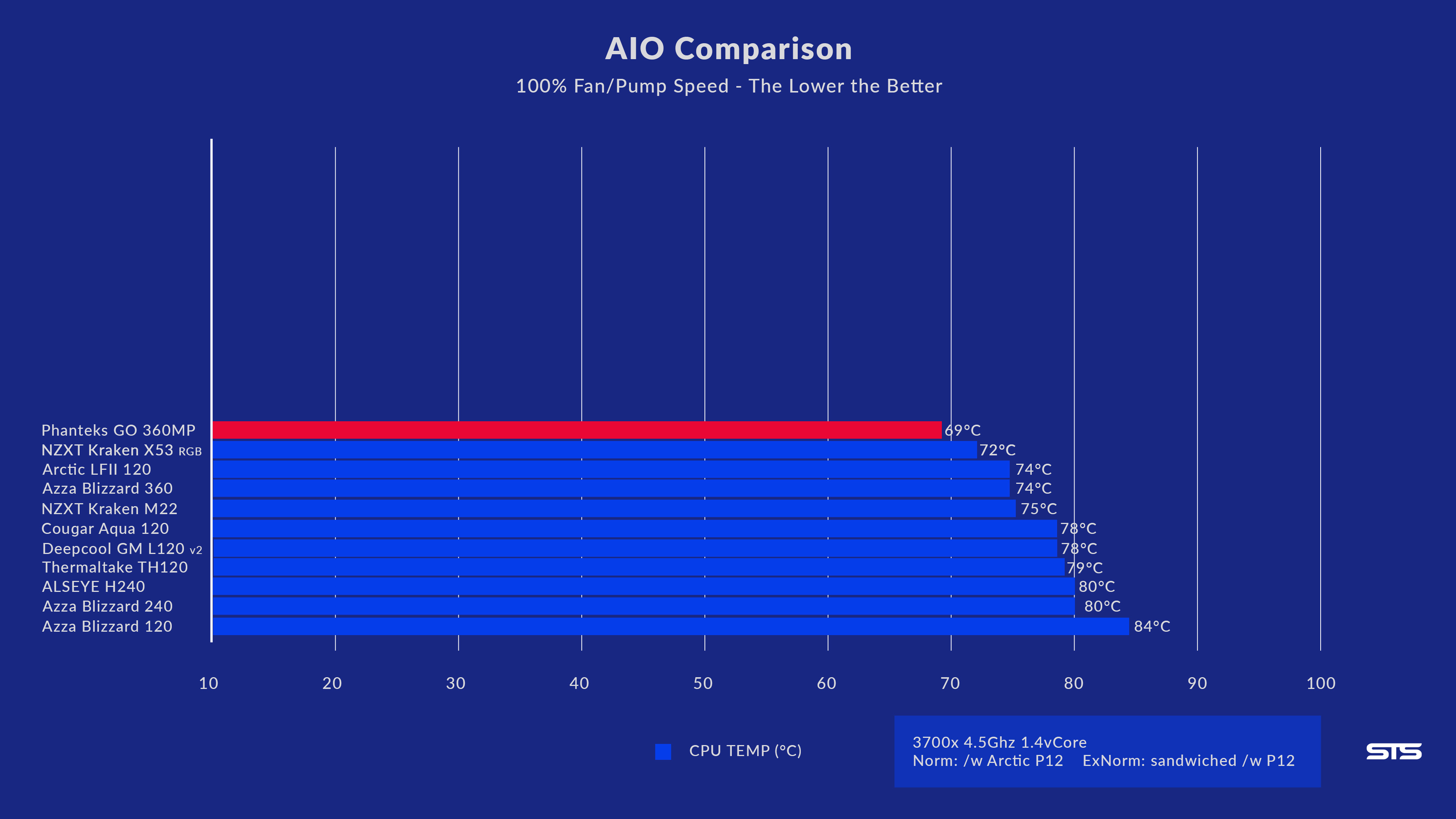
At 100% fan speed, the Phanteks Glacier One 360MP lets the 3700x sit at 69°C.
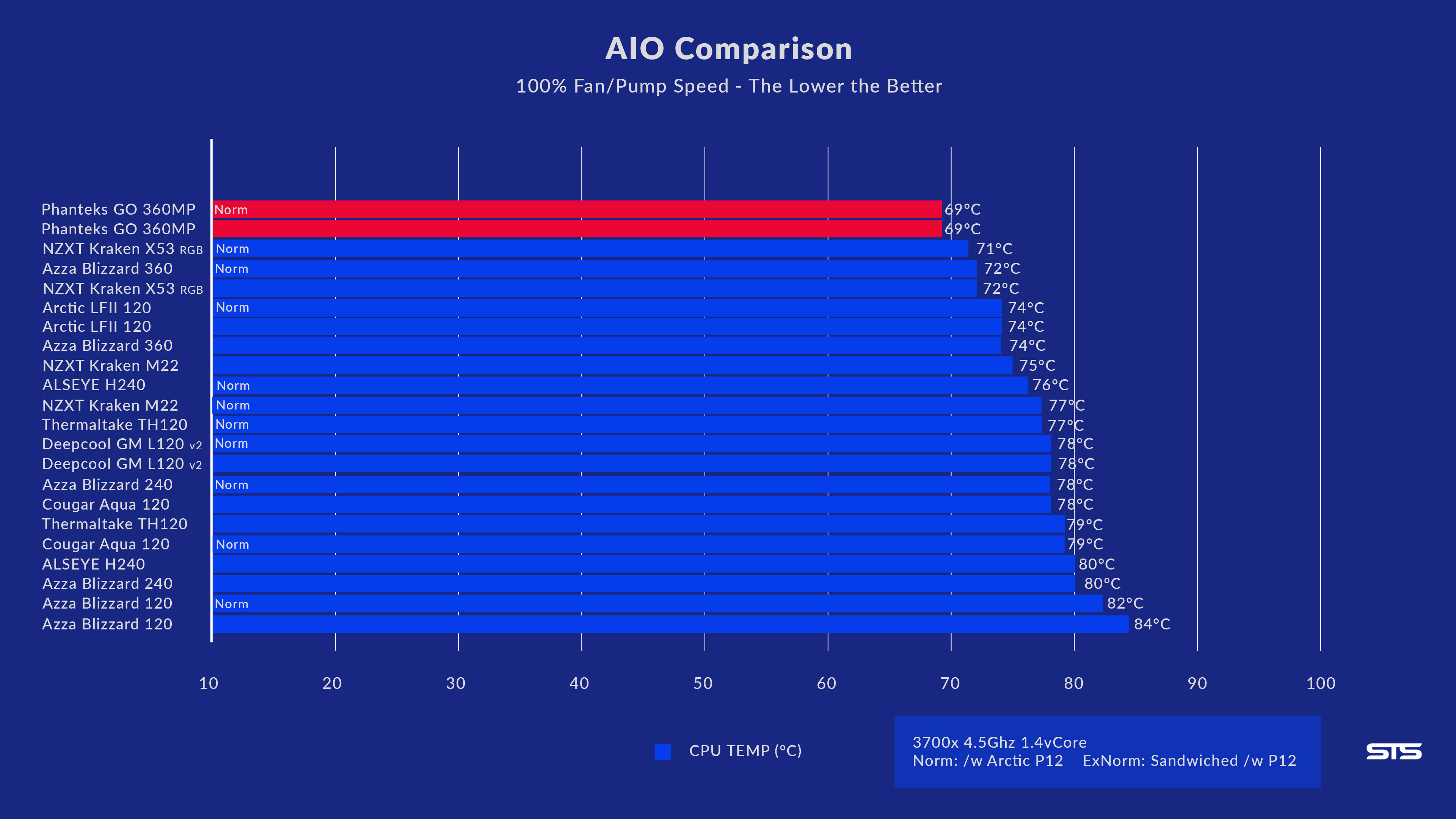
Replacing the Fans with our Arctic P12's ends up with the same 69°C.
Testing the Radiator to its fullest extent by using 6x Arctic P12's in a Push-Pull configuration, produced the same 69°C.
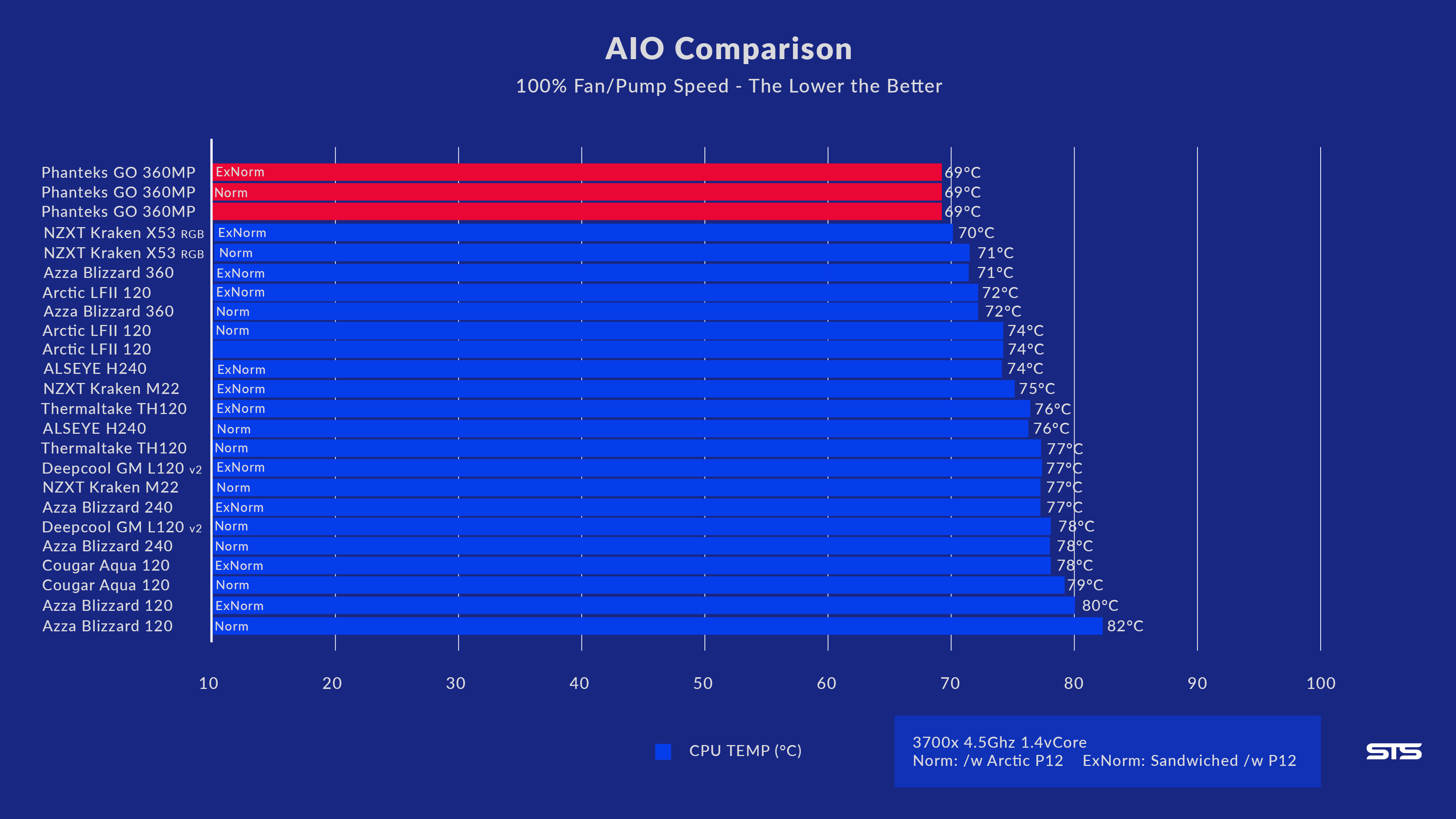
As you may have already noticed, there seems to be an issue. Every Benchmark ended up with exactly the same 69°C.
Therefore, we had to assume that the radiator is not able to keep up with the high airflow that any of our Tests were pushing through it.
In order to test this, we tried a variety of scenarios in which we lowered the speed of the original fans until we found the spot at which the radiator was working at max capacity.
Surprisingly, we were able to lower the speed to 75%, which was the lowest point capable of reproducing the same 69°C.
This may not seem like an issue, but we have to note that the 120 MP fans are ridiculously loud at 100% fan speed, as stated in their spec sheet. But this becomes an even greater issue due to the last 25% being wasteful performance as the radiator is not able to keep up anyway. (In-depth analysis in the video at the top of this page).
Generally, the Glacier One 360MP's performance is relatively good and we cannot call it bad in any way. But we have no note that the included fans are overpowered and therefore louder than they should be. Something that could have been avoided by including weaker fans that produce less noise.
Conclusion

Looking at the product as a whole, we were happy with what Phanteks was able to produce.
The performance is good,
it looks clean and modern,
the included cable holders are a nice addition,
and the overall quality is top-notch.
But we cannot ignore the fact that every one of our benchmarks showed that either the radiator is not performing well enough, or the fans are completely overpowered. Therefore we hope that Phanteks over revises the Glacier One in the future, and decides between a better performing radiator or weaker fans.
We found Phanteks's approach to hide the Waterblock screws by using a removable cover innovative and well implemented. But we cannot understand why there are no alternative designs available at this moment. We think that this is a yet untapped market, which Phanteks could immediately dominate by releasing a couple of covers.

With all of that said, we are still quite happy with the Glacier One 360MP. Even if it has its flaws or underpowered/overpowered components, it is still offering a great overall package.
At around 170€ or 170$, it is priced similarly to other AIOs in this performance and quality range.
Therefore, we can absolutely recommend it, but make sure to limit the Fans to 75-80% everything beyond that is wasteful noise which will just annoy you.

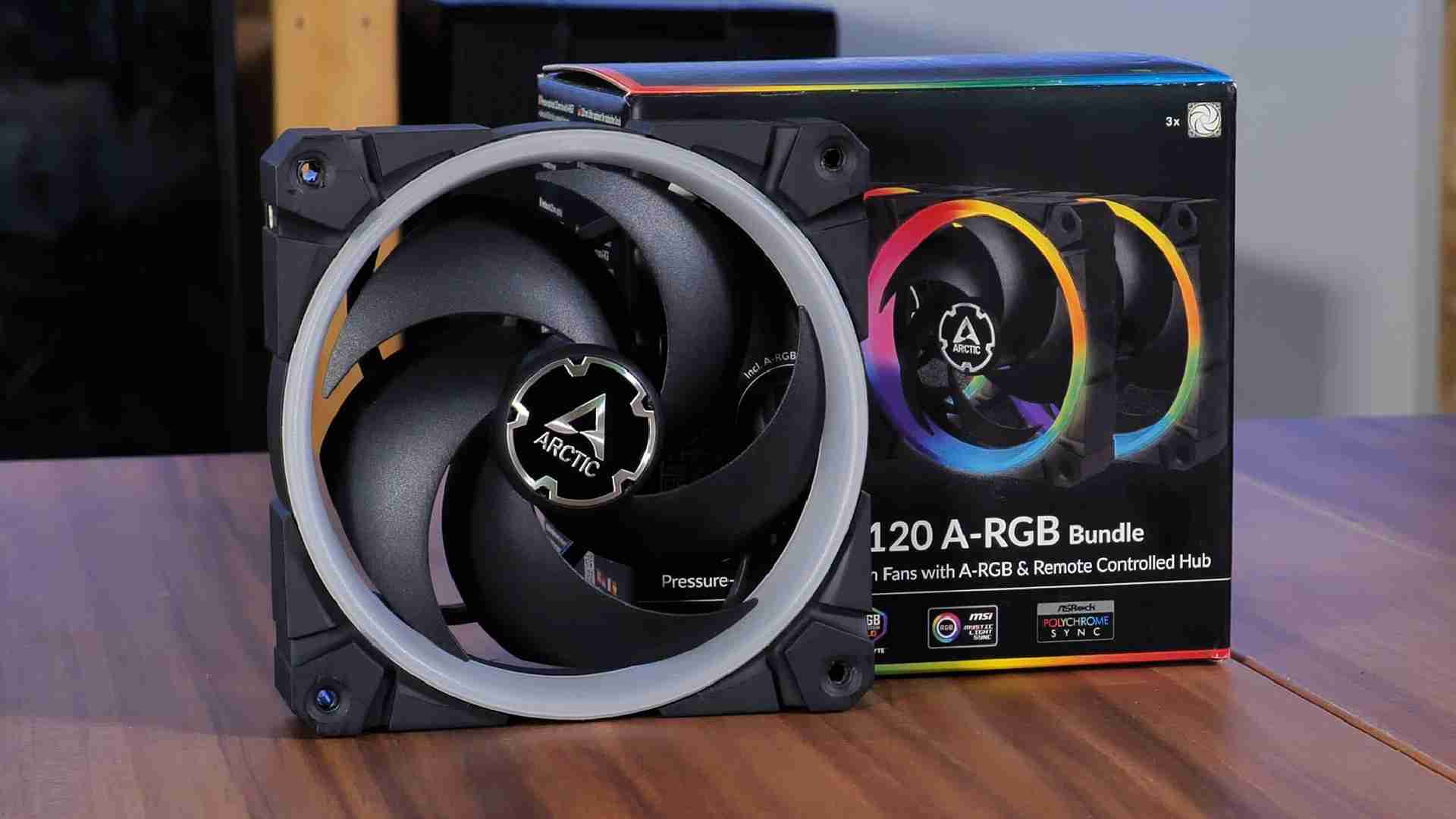
Arctic P120 BioniX ARGB Review
Arctic finally made the jump and released their first set of RGB Fans! The Arctic P120 Bionix P120 ARGB promise 2 things, Hig
Read More
Azza Cast Review
Azza already made itself known in the past with its exceptional cases. Now, Azza tries to redefine PC Cases again with the ne
Read More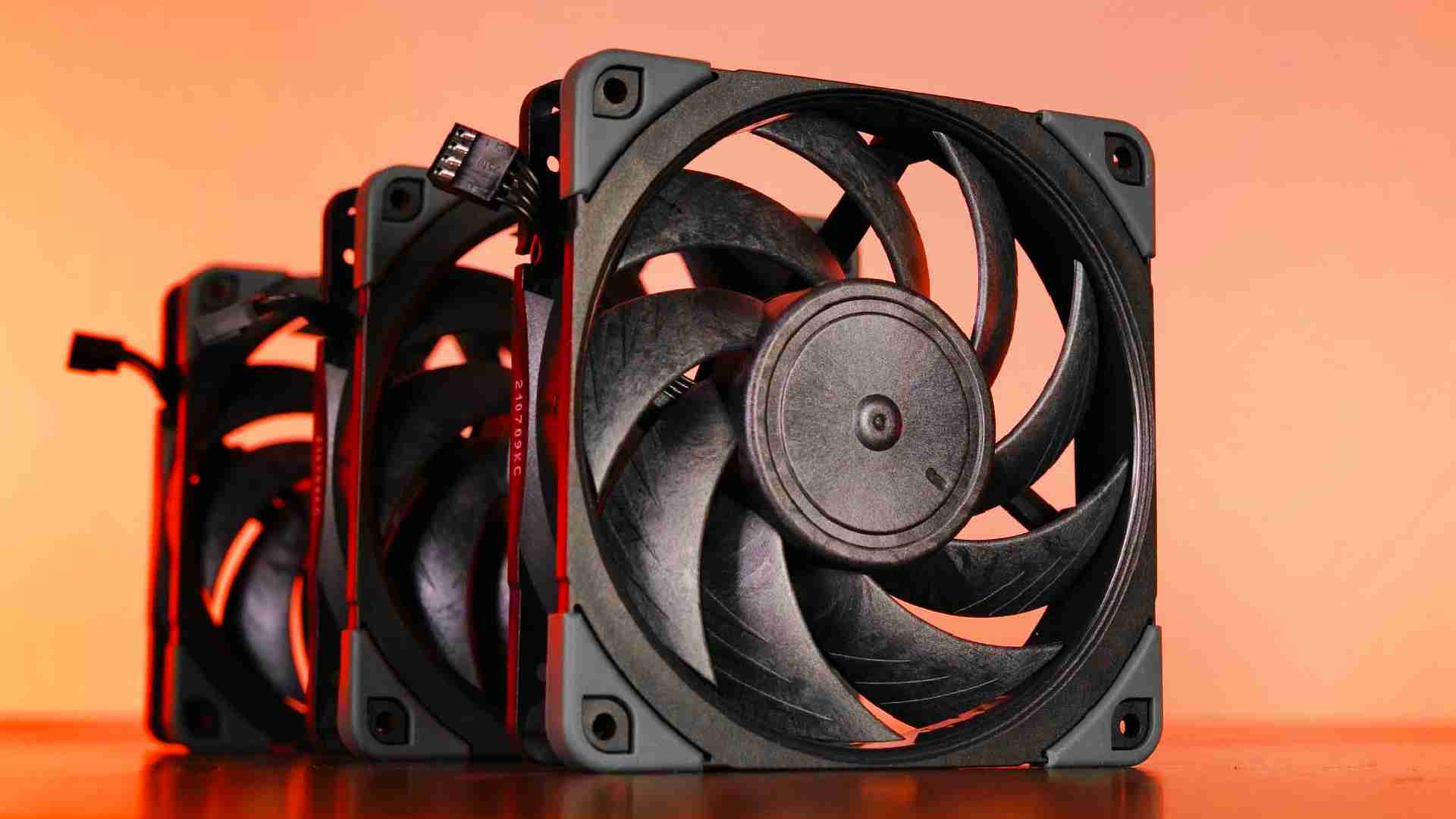
Noctua NF-A12x25 Chromax Black Review
With the introduction of Noctua's NF-A12x25, Noctua managed to produce probably the best Fan available on the market until to
Read More
Phanteks G500A Review
The Phanteks P500A was one banger of a case. Now it is time to look at the next generation. The G500A comes with a ton of lit
Read More